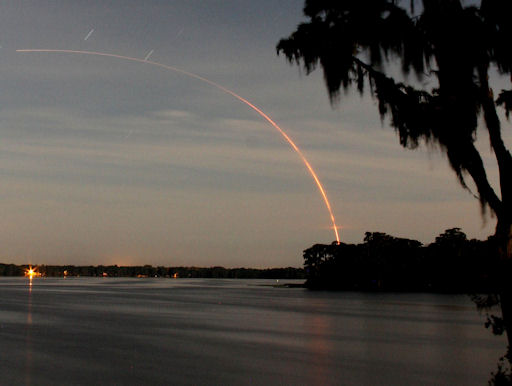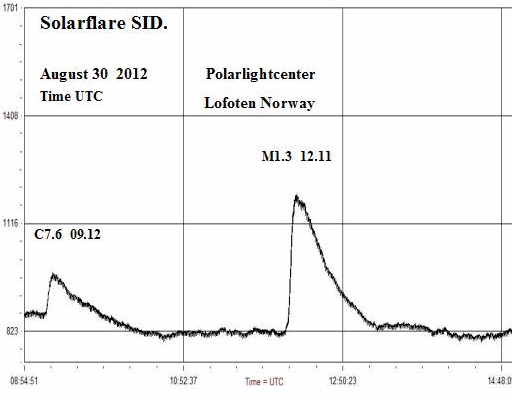Thirty-five new items have just been added to our Meteorite Jewelry collection. Browse the Space Weather Store for something out of this world. | | |
BLUE MOON: The full Moon of August 31st is a "Blue Moon," the second full moon in a calendar month. But could the Moon actually turn blue? Today's story from Science@NASA discusses the possibilities. [video]
RADIATION BELT STORM PROBES: Most spacecraft try to avoid the Van Allen Belts, two doughnut-shaped regions around Earth filled with "killer electrons." This morning, NASA launched two heavily-shielded spacecraft directly into the belts. Mark Staples of Little Lake Santa Fe, Florida, photographed the Radiation Belt Storm Probes (RBSP) lifting off just after 4:05 am EDT:

"I am about 150 miles NW of the launch pad, but I could easily see the bright flame as the Atlas V cleared the trees and clouds," says Staples.
Shortly after launch, the twin probes were successfully released from the rocket's Centaur upper stage, kicking off a two-year mission to study the mysteries of the Van Allen Belts. "I'm very happy to report that we have two happy spacecraft on orbit," says Rick Fitzgerald, RBSP project manager from the John Hopkins University Applied Physics Laboratory, which is managing the mission for NASA.
The two probes now begin a 60-day commissioning period. During the next two months, operators will power up all flight systems and science instruments and deploy long antenna booms, two of which are more than 54 yards long. The Storm Probes are equipped with radio beacons that will rapidly transmit data back to Earth so members of the public can get a nearly-realtime look at conditions inside the belts. Stay tuned.
Realtime Space Weather Photo Gallery
IONIZATION WAVES: Magnetic fields snaking around the sun's southeastern limb are crackling with C- and M-class solar flares. Extreme UV pulses from the flares are illuminating Earth's upper atmosphere, causing waves of ionization to ripple around the dayside of our planet. Rob Stammes detected the sudden ionospheric disturbances (SIDs) from his laboratory in Lofoton, Norway:

"The extra ionization altered the propagation of very low frequency radio signals around Northern Europe," explains Stammes. "I detected these changes using my 60 kHz SID receiver."
More ionization waves are in the offing. NOAA forecasters estimate a 40% chance of M-class solar flares during the next 24 hours. Solar Flare alerts: text, phone.
Realtime Aurora Photo Gallery
Realtime Noctilucent Cloud Photo Gallery
[previous years: 2003, 2004, 2005, 2006, 2007, 2008, 2009, 2011]

